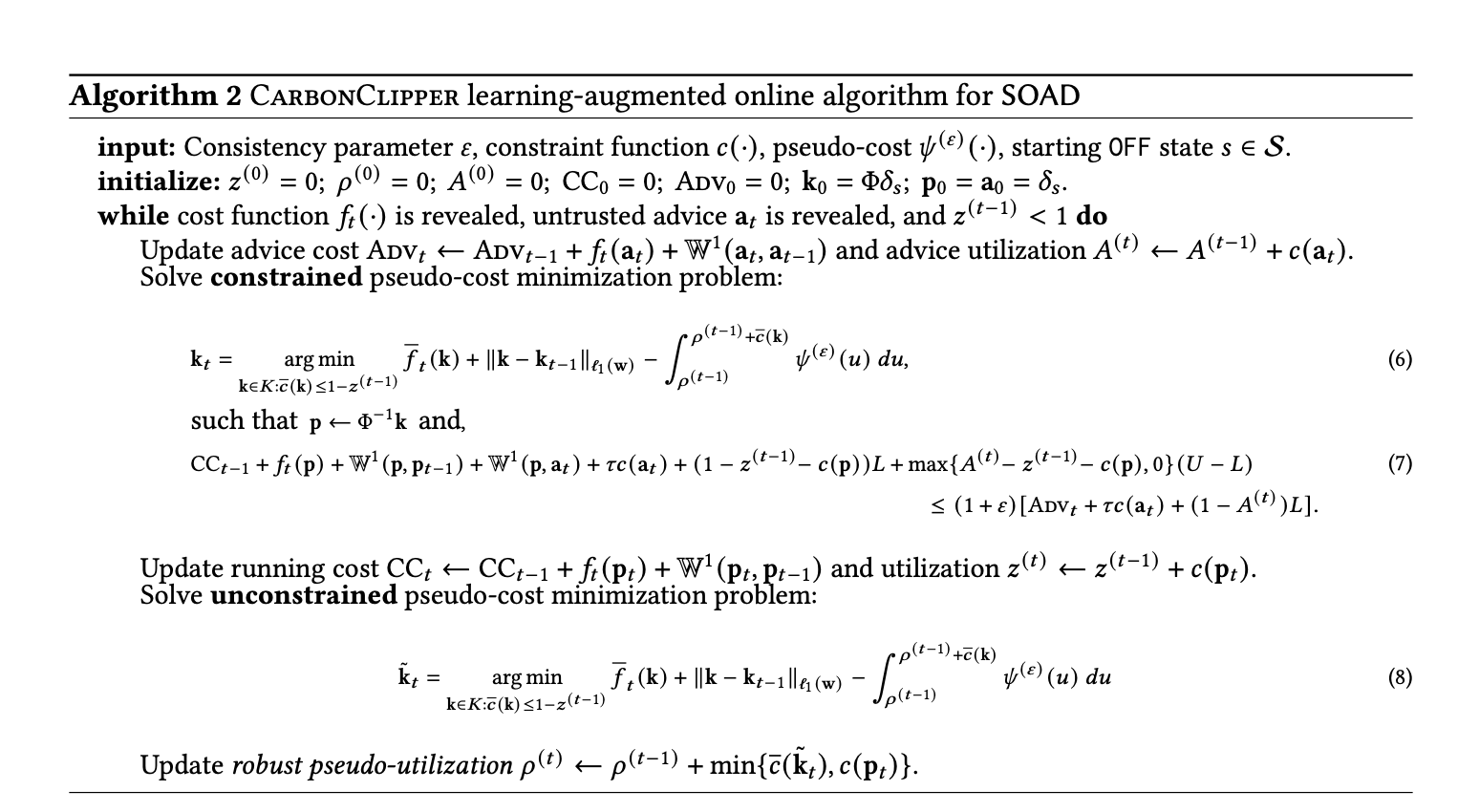CarbonClipper: A Learning-Augmented Algorithm for Carbon-Aware Workload Management that Achieves the Optimal Robustness Consistency Trade-off

Data centers are poised to be among the world’s largest electricity consumers. If there is no meaningful change, they will consume between 10% and 20% of the electricity used in the U.S. by 2030. This explosive energy demand is influenced by the increasing computational demand, especially for new generative AI applications. Growth at this rate also comes at a heavy environmental cost, namely the challenge of averting carbon emissions despite global initiatives to fight climate change. In this vein, researchers probe creative ways in which the operations of a data center should be conducted so that growth does not come at an environmental price.
This has mostly to do with the biggest intermittent factor when renewable energy is concerned—this factor can get very critically high or low. This thus creates a convoluted issue—since the data centers will need to adjust their workload management to optimize this period when carbon intensity is relatively low. This problem is further confounded by the need to balance carbon-aware scheduling with the operational constraints of the data centers, such as meeting deadlines for computational tasks and minimizing the associated costs of moving workloads across different geographical locations.
The approaches for managing the workloads in the data center need to be greatly toned to fully incorporate the variability of carbon intensity in space and time. The traditional methods could focus on either energy efficiency or cost reduction without reflecting on the impact of their decisions on carbon emissions. There are limitations in the current algorithms and models when dealing with the combined challenges due to movement costs and deadline constraints, especially for workload migration across different locations, hence becoming necessary for carbon efficiency.
Researchers from the University of Massachusetts Amherst & the California Institute of Technology teams have presented a new technique, CarbonClipper, which is a learning-augmented algorithm developed to gracefully manage workloads in a carbon-aware manner across a global network of data centers. Our approach uses forecasts, like that of carbon intensity, for the optimal allocation and scheduling of computational tasks under the movement costs associated with workload migration and constraints of tasks derived from their deadlines.
CarbonClipper is a competitive online algorithm incorporating machine learning predictions while optimizing consistency and robustness. This algorithm has been designed to strategically manipulate workloads, moving them in location and time with low-carbon energy availability of data centers. It does so by avoiding any overhead in terms of the costs of such migrations by optimizing the timing and locations of workload execution in a way that not only presents major carbon reductions but also does not miss the deadline for executing computational tasks.
The performance improvements that CarbonClipper brought compared to existing methods were mind-blowing. Specifically, the performance increased by at least 32% compared to the baseline techniques. In addition, the reduction in carbon emissions is mind-boggling, at 88.7% from a carbon-agnostic scheduler. These are the outcomes from abundant simulations that actualized over a global network of data centers—realistic test beds to evaluate the effectiveness of CarbonClipper. The simulations also showed how important it is to allow the algorithm to make real-time decisions based on forecasts of carbon intensity to later make dynamic adjustments in facing innovations—that is, changes—while keeping high efficiency and environmental performance.
To conclude, the study is a solution with solid means for the challenge of making the data center low in carbon footprints. The introduction by the research team of CarbonClipper answers the problematic challenge of carbon-aware workload management. It provides an approach toward reducing emissions while sustaining efficiency and effectiveness in data center operations. This approach has great potential for wide application within the industry and represents a significant step ahead in the sustainable computing arena.
Check out the Paper. All credit for this research goes to the researchers of this project. Also, don’t forget to follow us on Twitter and join our Telegram Channel and LinkedIn Group. If you like our work, you will love our newsletter..
Don’t Forget to join our 48k+ ML SubReddit
Find Upcoming AI Webinars here
Nikhil is an intern consultant at Marktechpost. He is pursuing an integrated dual degree in Materials at the Indian Institute of Technology, Kharagpur. Nikhil is an AI/ML enthusiast who is always researching applications in fields like biomaterials and biomedical science. With a strong background in Material Science, he is exploring new advancements and creating opportunities to contribute.


